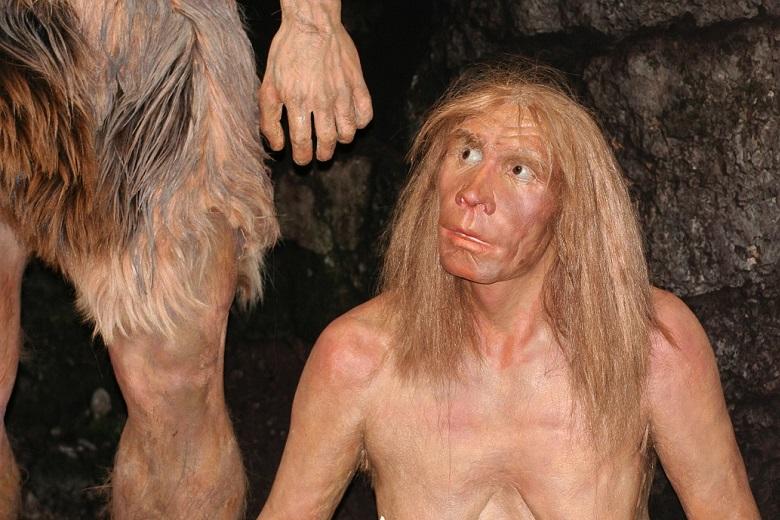Before the heyday of archeology and anthropology, people imagined their Stone Age ancestors as semi-animals – dirty, messy, vicious towards each other, naked or almost naked, sitting in caves in the smoke of their fires. Research and discoveries have made adjustments to these concepts.
This is what guides those trying to restore how the people of the Stone Age looked after themselves. Stone Age tombs, the swamp mummy is native to the Mesolithic. Peoples whose life developed slowly, in isolation, in conditions when metal processing and writing technology was never invented. They are sometimes referred to as peoples stuck in the Stone Age, but they went their way when life, customs, laws, mythology, and art slowly changed – and even technologies slowly advanced.
Not all Stone Age people stink
Of course, where it was cold in winter or almost always, there was no way to wash all year round. But in most cultures, people enjoy splashing in the water, especially the summer heat, and there is no reason to think that in the Stone Age, they did not have the pleasure of swimming in a river or lake in summer.
There was another aspect as well. Blood during regulation could attract predators and insects by the smell, and it was in the woman’s interest to maintain some hygiene. As for the men, their duties included hunting (however, literally everyone in the tribe was engaged in small hunting), and it was important not to frighten off the prey with a human smell.
To do this, it was not enough to approach from the leeward side; it was necessary either to wash off the smell or, in extreme cases, to interrupt it with a stronger one, like the smell of falling (this is what dogs do). However, in various cultures, most people hate the smell of falling – probably in the Stone Age. Hunters preferred to wash well or even scrape off sweat and dirt from the body (as they did, for example, in the insufficient freshwater of Ancient Greece), drowning out the remains a human smell of some fat. They were possibly mixed with mashed herbs to smell good for both prey and hunter
Haircare in the Stone Age
Many tribes like to be described as “wild” and “primitive,” and people leave their hair unattended in most of them. They are either cut off (for this, you do not need iron scissors – stone knives are very sharp and thin, only not as durable as steel) or braided in different ways.
People of the Stone Age could even make complex hairstyles from braids – they knew the principle of weaving as such with a probability that tends to one hundred percent. That is, they most likely twisted ropes, rope snares, baskets, and, perhaps, clothing details or rugs. Nothing stopped them from braiding, from one or two of the simplest to natural braided hairstyles for the holidays.
In addition, even monkeys unravel each other’s hair and pick out insects from it. Most likely, the people of the Stone Age did the same with each other.
Teeth brushing in the Stone Age
Almost all found skeletons of the Stone Age have longitudinal grooves on their teeth – characteristic traces of the constant use of toothpicks. In addition, fruits such as apples, chewing fibrous plants (which are still used today), and chewing resin could be used to clean teeth. What you can’t prove is whether or not people used mouthwash back then.
But it is known that at least in some places, people treated their teeth – they scraped out the damaged part and filled the hole with a filling made of resin mixed with fibers and plants and human hair. No wonder – after all, already written during the Inca empire, complex and precise operations were performed with stone tools.
Clothes were worn in the stone age
And not just loincloths. Weaving was learned in the Neolithic, one of the periods of the Stone Age. And it was to make clothes. On the other hand, although it seems technically more straightforward, Knitting was invented later, in the Copper Age.
In addition, judging from the tombs and ancient statues, people made quite elaborate clothes from skins. And, most likely, they washed them – for the same reason that it was logical for them to wash.
And even in the Stone Age, they loved to apply patterns to many different things and knew what natural dyes were. Many people in the Stone Age probably applied patterns to their skin and face, including to look beautiful.
They didn’t walk with long claws in the stone age
Long nails are very uncomfortable in everyday life; they touch everything and painfully break. If you look at the written history, then long nails in the past were many of those who have slaves and servants. In the Stone Age, hardly a lot of people could avoid working with their hands every day (and hardly anyone liked to pluck a nail).
Most likely, the fingernails were either cut with a knife, or bitten, or, as the gypsies did two hundred years ago, were ground against a flat stone. The toenails, too, were treated with the same measures.
